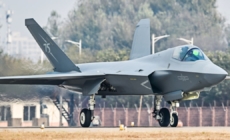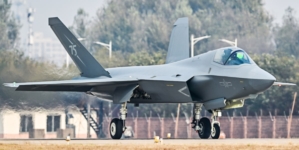-
Mountain fire destruction shown in before-and-after satellite photos - 12 mins ago
-
Joel Klatt on whether Oregon is really the best team in the nation & a true No. 1 | The Herd - 14 mins ago
-
Man who fatally stabbed victim in 1991 while chanting ‘Satan is with us’ is granted probation - 26 mins ago
-
China has increased military flights near Taiwan by 300%, U.S. general says - 40 mins ago
-
Jack Smith Disappoints Donald Trump’s Critics - 47 mins ago
-
USC President Carol Folt to retire in July - 53 mins ago
-
Dak Prescott wants to avoid surgery on hamstring and return this season - 57 mins ago
-
Donald Trump says he has no plans to sell DJT stock, calls for probe into “market manipulators” - about 1 hour ago
-
Titans HC Brian Callahan Makes Final Decision on Will Levis Starting in Week 10 - about 1 hour ago
-
New Chinese stealth fighter to take center stage at ChinaŌĆÖs biggest airshow - about 1 hour ago
North Korea boasts of new ICBM capable of reaching the U.S. mainland
SEOUL, South Korea ŌĆö North Korea on Friday bragged of its recently tested┬Ānew intercontinental ballistic missile,┬Ācalling it ŌĆ£the worldŌĆÖs strongest,ŌĆØ a claim viewed by outside experts as propaganda though the test showed an advancement in the NorthŌĆÖs quest to build a more reliable weapons arsenal.
A missile launched by North Korea on Thursday flew higher and stayed in the air for a longer duration than any other weapon the country had so far fired. It signaled that the North has achieved progress in acquiring a nuclear-armed ICBM that can hit the U.S. mainland. But foreign experts assess that the country has still a few remaining technological issues to master before acquiring such a functioning ICBM.
On Friday, the NorthŌĆÖs Korean Central News Agency identified the missile as the ŌĆ£Hwasong-19ŌĆØ ICBM and called it ŌĆ£the worldŌĆÖs strongest strategic missileŌĆØ and ŌĆ£the perfected weapon system.ŌĆØ
KCNA said leader Kim Jong Un observed the launch, describing it as ŌĆ£an appropriate military actionŌĆØ to express North KoreaŌĆÖs resolve to respond to its enemiesŌĆÖ moves that escalated tensions and threats to North KoreaŌĆÖs national security. It said Kim thanked weapons scientists for demonstrating North KoreaŌĆÖs ŌĆ£matchless strategic nuclear attack capability.ŌĆØ
South KoreaŌĆÖs military earlier said that North Korea could have tested a solid-fueled missile, but FridayŌĆÖs KCNA dispatch did not say what propellant the Hwasong-19 ICBM uses. Observers say the color of exhaust flames seen in North Korean media photos on the launch still suggest the new ICBM uses solid fuels.
Before ThursdayŌĆÖs test, North KoreaŌĆÖs most advanced ICBM was known as the┬ĀŌĆ£Hwasong-18ŌĆØ┬Āmissile, which uses solid fuels.┬ĀPre-loaded solid propellants┬Āmake it easier to move missiles and require much less launch preparation time than liquid propellants that must be fueled before liftoffs. So itŌĆÖs more difficult for opponents to detect launches by solid-fuel missiles.
In recent years, North Korea has reported steady advancement in its efforts to obtain nuclear-tipped missiles. Many foreign experts believe North Korea most likely has missiles that can deliver nuclear strikes on all of South Korea, but it has yet to possess nuclear missiles that can travel to the mainland U.S.
There are questions on whether North Korea has acquired the technology to shield warheads from the high-temperature, high-stress environment of atmospheric reentry. Many foreign analysts say North Korea also must have improved altitude control and guidance systems for missiles. They say North Korea needs an ability to place multiple warheads on a single missile to defeat its rivalsŌĆÖ missile defenses.
All of North KoreaŌĆÖs known ICBM tests, including ThursdayŌĆÖs, have been performed on steep angles to avoid neighboring countries. South Korean military spokesperson Lee Sung Joon said Thursday that a high-angle trajectory launch cannot verify a missileŌĆÖs re-entry vehicle technology, though North Korea has previously claimed to have acquired that technology.
Observers say that ThursdayŌĆÖs launch, the NorthŌĆÖs first ICBM test in almost a year, was largely meant to grab American attention days before the U.S. presidential election and respond to international condemnation over┬ĀNorth KoreaŌĆÖs reported dispatch of troops┬Āto Russia to support its war against Ukraine.
North KoreaŌĆÖs reported troop dispatch highlights the expanding military cooperation between North Korea and Russia. South Korea, the U.S. and others worry that North Korea might seek high-tech, sensitive Russian technology to perfect its nuclear and missile programs in return for joining┬Āthe Russia-Ukraine war.
Source link































